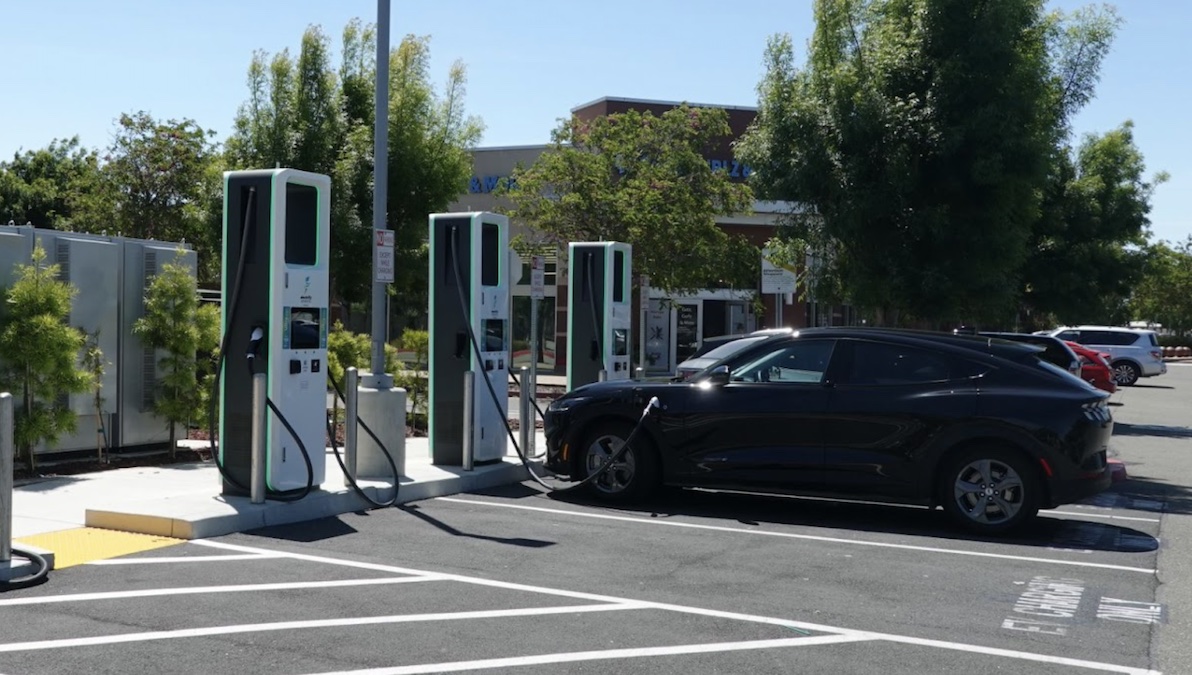If you build it, will they notice?
How to Make Public Electric Vehicle Chargers a More Effective Marketing Tool

Widespread adoption of plug-in electric vehicles (PEVs) is a key strategy to help reduce emissions of greenhouse gasses and pollutants. To help implement this strategy, US federal and state agencies, utilities, and private companies are investing billions of dollars in public PEV charging infrastructure. This effort is intended to not only provide charging support for current PEV owners, but also promote PEV sales to potential future buyers. However, when we tested the assumption that the mere presence of more charging stations can encourage people to buy or lease PEVs, we found it to be faulty.
In part, the expectation that building public charging prompts PEV sales is based on the observation that areas with more public chargers have higher PEV sales than areas with fewer chargers. However, this association does not necessarily prove that more public charging causes more PEV sales. It could be that the reverse is true—that increased PEV sales causes more public charging to be installed. Concluding that the presence of more chargers causes more sales relies on an untested assumption that people who do not own PEVs take note of public chargers around them. However, as cognitive studies have shown, we tend to notice only those things in our environment that we are attuned to or that have significance for us.
In a recent study, we tested the assumption that people even notice public chargers, and we examined the possible relationships between public charger density, whether people see chargers around them, and whether those people are considering a PEV purchase or have already acquired a PEV. We surveyed nearly 3000 car-owning households in urban, suburban, and rural California and matched respondents’ residential and workplace ZIP codes to the density of public charging locations and PEV registrations in those areas.
We found no relationship between the density of public PEV charging locations in respondents’ residential ZIP codes and whether they report seeing PEV charging locations or have considered purchasing a PEV. Nor did we find a relationship between public charging density and participants’ assessments of their access to PEV charging.
Rather, regardless of the number of charging stations, the respondents who were more likely to report seeing them were those with a prior interest in PEVs. Those with no prior interest in PEVs were less likely to report seeing them. Prior interest, or engagement, with PEVs was defined as awareness (“Have you heard…”), knowledge (“Do you know…”), and assessment (“What do you think…”) of PEVs. For those who commute to a workplace outside their residential ZIP code, the results were the same, even if charging density in their workplace ZIP code was considered.
We found no evidence to support the assertion that seeing public PEV charging leads directly to PEV purchase consideration. Rather, seeing more public charging was associated with having a more positive assessment of whether there are enough PEV charging locations and that PEVs are ready for a “mass market.” In turn, both these assessments were associated with consideration of buying or leasing a PEV.
Our findings align with research from cognitive and experimental psychology on what people do and don’t see in their environment. For people with little or no interest in PEVs, public PEV charging may be of little importance, so they may not even notice charging infrastructure. Compared to someone with a prior interest in PEVs, they are unlikely to have ever actively searched for charging or to perceive cues to its presence or absence.
These results show that it is not enough for public charging to simply exist; people must perceive its existence for it to prompt or influence PEV purchase consideration. In order to perceive public PEV charging, people must first be interested in doing so.
Engaging many more people with PEVs—through promotion, education, and outreach—appears to be a necessary step for investments in PEV charging infrastructure to have their hoped for effect on PEV sales. Thus, we recommend a greater focus on and more investment in education and promotional programs that engage people with PEVs. Investments into public charging infrastructure, though necessary, are unlikely on their own to increase engagement with and sales of PEVs among the broader population.
___
Kelly Hoogland is a Graduate Student Researcher with the EV Research Center
Kenneth Kurani is Associate Researcher, Consumer Research Emphasis, at the EV Research Center
Scott Harman is Associate Research Faculty and Assistant Director of the Electric Vehicle Research Center
Thank you for your interest in the UC Davis Institute of Transportation Studies. Subscribe today to keep up with the latest ITS news and happenings.
